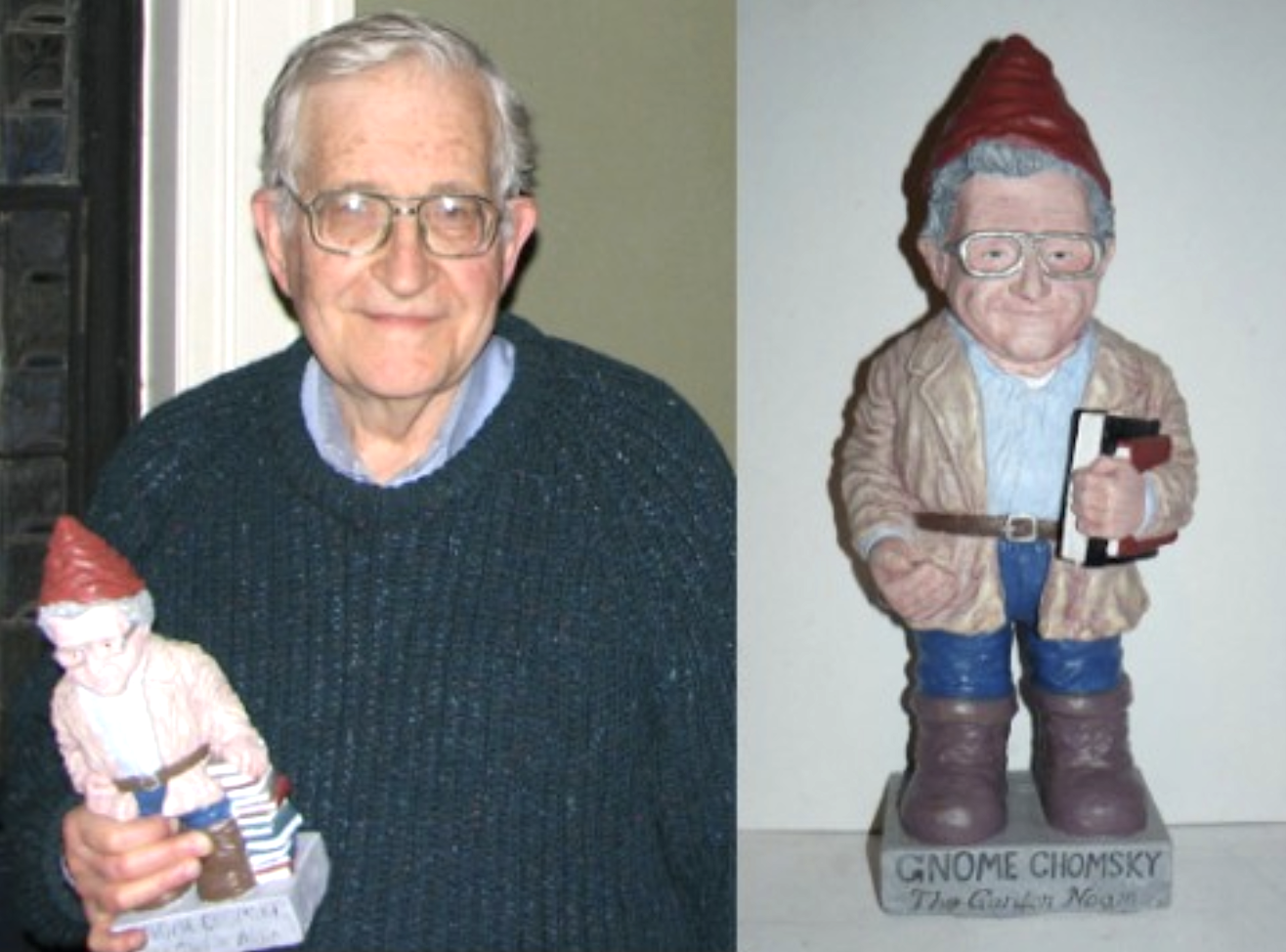Images via JustSayGnome
The Noam Chomsky Garden Gnome. That’s right, I said it, the Noam Chomsky Garden Gnome.
Over at justsaygnome.net, you can buy “Gnome Chomsky the Garden Noam.” Here’s is how it’s generally described:
Just over one foot in height, the fully painted Gnome Chomsky the Garden Noam (Version II) stands relaxed and confident in his classy gnome clothes, hat and glasses. Equipped with a couple books on an authoritative pillar, he’s ready to give your garden or home a big infusion of insightful gnome political perspective. A solid foundation base complete with a carved title assures that Garden Noam will be well-balanced and helps inform anyone who may not immediately recognize him of the identity of this handsome and scholarly gnome.
The gnome costs $228.00 painted and $124 unpainted (plus shipping). And if you’re interested, you can also get Howard the Zinn Monk and BerGnome Sanders.
In putting this post together, I spotted an old comic bit that took the idea of a Noam Garden Gnome as its premise. You can watch it below.
If you would like to sign up for Open Culture’s free email newsletter, please find it here. It’s a great way to see our new posts, all bundled in one email, each day.
If you would like to support the mission of Open Culture, consider making a donation to our site. It’s hard to rely 100% on ads, and your contributions will help us continue providing the best free cultural and educational materials to learners everywhere. You can contribute through PayPal, Patreon, and Venmo (@openculture). Thanks!
Related Content:
Clash of the Titans: Noam Chomsky & Michel Foucault Debate Human Nature & Power on Dutch TV, 1971
Noam Chomsky Defines What It Means to Be a Truly Educated Person












